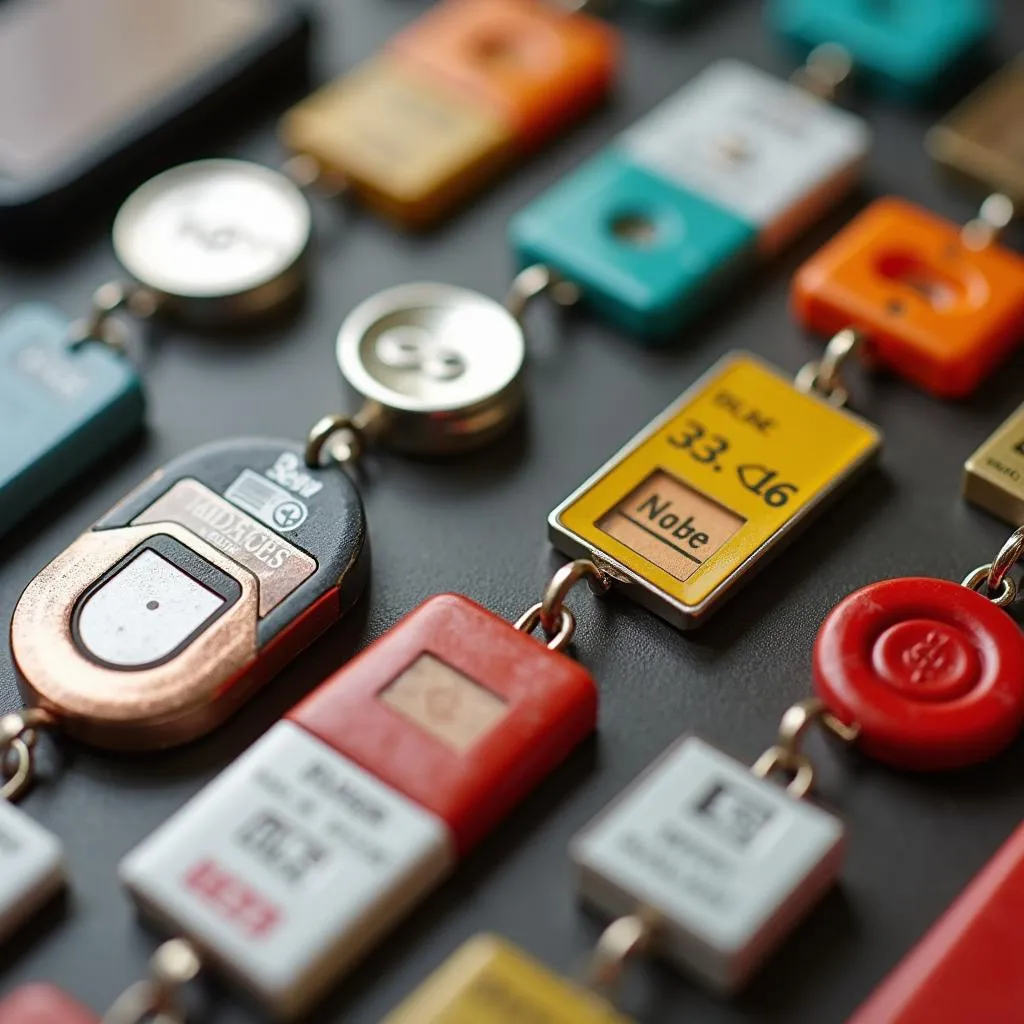If you’re experiencing issues with your 2013 Toyota RAV4 key fob, a dead battery might be the culprit. A malfunctioning key fob can be a real headache, potentially leaving you stranded. Don’t worry, we’re here to help! This comprehensive guide will walk you through everything you need to know about your Toyota RAV4 key fob battery, from identifying the correct type to replacing it yourself.
Understanding Your Toyota RAV4 Key Fob Battery
Before we delve into the replacement process, it’s essential to identify the correct battery type for your 2013 Toyota RAV4 key fob. Using the wrong battery can lead to compatibility issues and potentially damage your key fob.
What Battery Does a 2013 Toyota RAV4 Key Fob Take?
The 2013 Toyota RAV4 key fob typically uses a CR2032 battery, a common type of lithium coin battery. These batteries are known for their long lifespan and reliable performance in small electronic devices.
Expert Insight:
“Always double-check the battery type printed on your existing key fob battery or consult your owner’s manual before purchasing a replacement,” advises John Miller, a seasoned automotive electrician. “This simple step can save you from potential compatibility issues.”
Replacing Your 2013 Toyota RAV4 Key Fob Battery: A Step-by-Step Guide
Replacing the battery in your 2013 Toyota RAV4 key fob is a relatively straightforward process that you can easily do at home with just a few tools. Here’s a detailed guide:
-
Gather Your Supplies: You’ll need a new CR2032 battery, a small flat-head screwdriver, and optionally, a small tray to keep the components organized.
-
Locate the Battery Compartment: On the back of your Toyota RAV4 key fob, you’ll find a small release button or notch. Use your fingernail or the tip of the flat-head screwdriver to gently press the release button and separate the key fob casing.
-
Remove the Old Battery: Carefully pry out the old CR2032 battery from its compartment. Avoid using excessive force to prevent damaging the key fob.
-
Insert the New Battery: Insert the new CR2032 battery into the compartment, ensuring the positive (+) side faces up. This information is usually engraved on the battery itself and inside the battery compartment.
-
Reassemble the Key Fob: Align the two halves of the key fob and press them firmly together until you hear a click, indicating that the casing is securely closed.
-
Test Your Key Fob: Once assembled, test all the buttons on your key fob, including locking, unlocking, and panic functions, to ensure the new battery is working correctly.
Troubleshooting Common Issues
If your Toyota RAV4 key fob still doesn’t work after replacing the battery, here are a few troubleshooting tips:
- Check Battery Orientation: Ensure the new battery is inserted correctly with the positive (+) side facing up.
- Clean the Battery Contacts: Over time, the battery contacts inside the key fob can accumulate dirt and grime, hindering connectivity. Use a cotton swab lightly dampened with rubbing alcohol to clean the contacts.
- Reprogram the Key Fob: In some cases, you might need to reprogram your key fob to your vehicle after replacing the battery. Refer to your owner’s manual for instructions on how to do this, as the process can vary depending on the model year.
Expert Insight:
“If you’ve tried these troubleshooting steps and your key fob still isn’t working, it’s best to consult with a qualified automotive locksmith or dealership,” suggests Sarah Jenkins, an experienced automotive technician. “They have the expertise and diagnostic tools to identify and address any underlying issues.”
Conclusion
Replacing the battery in your 2013 Toyota RAV4 key fob is a simple task that can save you time and money. By following the step-by-step guide and tips outlined in this article, you can ensure your key fob is always in top working order. Remember to always use the correct battery type (CR2032) and consult your owner’s manual for specific instructions related to your vehicle model. If you encounter any difficulties, don’t hesitate to seek professional assistance from a qualified automotive locksmith or dealership.

